Industry and trade

Since the People’s Republic of China (PRC) surpassed Japan as the world’s second largest economy in 2010, guessing when the PRC would eclipse the United States (US) as the world’s largest economy has been an exciting game among PRC watchers. On 10 February came the surprising news that the PRC had surpassed the US to become the world’s No. 1 trading nation, after both countries officially announced their 2012 trade figures. According to the US Department of Commerce, total US trade in 2012 amounted to $3.82 trillion, about $50 billion short of the PRC’s exports and imports of $3.87 trillion, estimated by China Customs.
Industry and trade
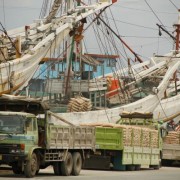
Slowing growth and rising unemployment sometimes induce economies to become more inward-oriented with restrictive policies. Indonesia shows early signs of such tendencies and its future growth may be at risk. The experience of high performing East Asian economies, however, suggests that outward-oriented policies and infrastructure investment support sustainable growth. Indonesia’s growth slowed to 6.2% in 2012 from 6.5% in 2011. Its growth in the previous decade was below 6%. A slight dip notwithstanding, a turnaround seems to be continuing in this resource-rich economy once seen by the West as a basket case of crony capitalism during the 1997–1998 Asian financial crisis.
Population

Seven of the world’s ten richest economies by real gross domestic product (RGDP) per capita are in Asia and the Middle East, and all have sizeable populations of foreign migrant workers (FMWs) that have contributed greatly to growth. The proper handling of FMW involvement in an economy is crucial for continued prosperity. Despite the widespread reliance of many economies on FMWs, much of the related research has focused on the narrower issue of the impact of foreign labor on local employment and the resultant downward pressure on local wages (e.g., Borjas et al. 1996. Goto 1998). In comparison, very little evaluation has been done on the extent of their contribution to economic growth across countries.
Regional cooperation and integration
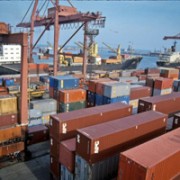
Time is running out for Japan to join the Trans-Pacific Partnership Agreement (TPP), as the negotiating countries aim to conclude the talks before the Asia-Pacific Economic Cooperation (APEC) meeting in October this year. Although former Japanese Prime Minister Yoshihiko Noda had expressed strong interest during his tenure in joining the TPP negotiations, his successor, Prime Minister Shinzo Abe, has not expressed similar sentiments as the Liberal Democratic Party (LDP) took a cautious stance on the TPP during Japan’s December 2012 general election. The TPP is a high-standard and comprehensive trade agreement under negotiation by Australia, Brunei Darussalam, Canada, Chile, Malaysia, Mexico, New Zealand, Peru, Singapore, the United States (US), and Viet Nam.
Governance and public sector management

Is fiscal and/or political union, where more sovereignty is shared among countries in Europe’s Economic and Monetary Union, the way forward for the eurozone to stay together and deal with economic and financial divergences among member states? Differences in size, development, and institutions present the monetary union with a policy coordination dilemma, as countries often tend to let domestic interests prevail on agreed commitments. At the current juncture, and learning from the sovereign debt crisis, the countries of Europe need to consider what is the best institutional framework for the monetary union. Such a framework should avoid the building up of imbalances and help countries to live with the euro and within the currency union. Is political union the way forward for EMU? Surely continuing the status quo is not an option.
Regional cooperation and integration
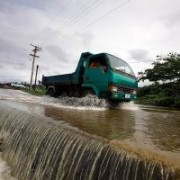
Recent decades have witnessed a rapid expansion of production networks and supply chains in East and Southeast Asia, made possible by underlying forces of technological advances and reductions in trade barriers and driven by pursuit of economies of scale and agglomeration, and greater efficiency and lower costs. The successful functioning of such finely constructed and balanced production networks and supply chains rests, however, on the premise of there being no major disruptions to the system, including natural disasters. Historical data indicate that the East and Southeast Asia region is, in fact, especially prone to a variety of natural hazards (earthquakes, tsunamis, floods, and typhoons).
Population
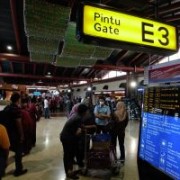
While there has been strong promotion of free global trade in goods and services as well as in capital inputs, the case has not been made so forcefully for increasing the international mobility of the other factor of production, labor. A recent article in The Economist, Free Exchange—Border Follies, surveys the latest research on the potential benefits of increasing international labor migration (The Economist 17 November 2012). The estimates are staggering, with possible increases in world output and income ranging from 30% to 100% (amounting to an additional $20 trillion to $70 trillion) depending on the level of migration assumed. These calculations swamp the potential benefits of increasing international trade, which is estimated to be less than 3% of global output. The research shows that the gains come from migration-induced productivity increases in the host country and the additional incomes are more than sufficient to compensate for any adverse effects, for example, if wages for some host country workers fall in the short term. Remittances (worth around $300 billion a year) are also sent to the migrant source countries to compensate those who stay behind.
Finance sector development
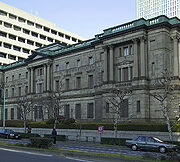
The Bank of Japan (BoJ) announced its much-awaited new monetary policy framework on 22 January 2013, following heightened pressure from newly-elected Japanese Prime Minister Shinzo Abe for it to pursue “unlimited” monetary easing in order to finally overcome deflation. The new framework has two major elements: a “price stability target” of 2% for the consumer price index (CPI) and an “open-ended asset purchasing method” for its Asset Purchasing Program (APP). Although the BoJ did not commit itself to a deadline for achieving 2% inflation, it said that it would aim to achieve this target “as early as possible.” The main innovation of the “open-ended” purchasing method is that the BoJ does not set a target date for ending the program, unlike previous programs.
Finance sector development

The International Monetary Fund (IMF) has just released a new policy paper on capital flows (IMF 2012). A recent editorial in the Financial Times describes it this way: As far as intellectual shifts go, the U-turn by the International Monetary Fund on capital controls is remarkable. In the 1990s, the IMF came close to including the promotion of capital account liberalisation in its rule book. On Monday, after a thorough three-year review, the fund has accepted institutionally that direct controls can play a useful role in calming volatile, international capital flows. (Financial Times. 3 December 2012)
Finance sector development
During the 2008 financial crisis, Asia experienced exchange rate volatility and liquidity shortages of the key currency—the US dollar—that severely affected trade within the Asia-Pacific Economic Cooperation (APEC) region. The dollar is crucial to maintaining financial market stability at an appropriate liquidity level. While the dollar is expected to remain the key currency in the foreseeable future, the crisis has led to a rethinking of the global economy’s over-reliance on the dollar and its capital and financial markets, and the need to enhance the role of emerging currencies and their markets.
While it will take time for emerging market currencies to become significant reserve currencies, their growing importance in the settlement of cross-border trade and investment can no longer be ignored. Read more.















Recent Comments